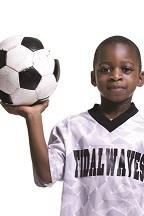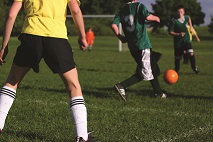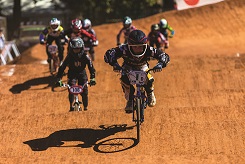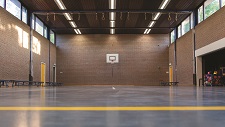
 Everyone has heard the stories: less time allotted for P.E. and recess, more overweight kids, more distractions that lead to a sedentary lifestyle. It means that many times, parents are looking for outlets to get kids active and keep them active. That’s where sports teams come in. And whether they’re rec-level programs, travel teams or others, they all have the same goal: teach kids a sport, keep them active and keep them happily occupied in a healthy pastime.
Everyone has heard the stories: less time allotted for P.E. and recess, more overweight kids, more distractions that lead to a sedentary lifestyle. It means that many times, parents are looking for outlets to get kids active and keep them active. That’s where sports teams come in. And whether they’re rec-level programs, travel teams or others, they all have the same goal: teach kids a sport, keep them active and keep them happily occupied in a healthy pastime.
Here at US Youth Soccer, we see parents trying to make up for the activity deficiencies in their kids’ lives. We realize it’s not just sports, but what we call ‘physical literacy’ that needs to be made a part of their routine. And if they’re not getting this at school, clubs can certainly help provide it.
Of course, we like the idea of kids enrolled in sports programs, but in our opinion, it’s not so much about a lack of physical education, but it’s about what kids aren’t doing in their day-to-day lives that they were doing back when we were kids, that continues to affect how sedentary they become. Throw in the challenge of some kids thinking they’re not good enough to play and you have yet another obstacle.
As background, US Youth Soccer markets itself as “The game for ALL kids,” meaning those playing at different levels will be able to find a program in their area that suits their age, their skill, their competitive drive (or by contrast, their wish to play just for fun). We recognize that kids are different and because they are different, their physical, social and psychological needs are different. US Youth Soccer provides healthy activity through recreational and small-sided game programs. These programs emphasize fun and de-emphasize winning at all costs. Every child is guaranteed playing time and the game is taught in a fun and enjoyable atmosphere.
Having said that, we have had the chance to think about how our sport has adapted to the challenges facing today’s kids. These are ideas other coaches and programs can implement.
Beyond the Basics
We think it’s important to encourage coaches to incorporate not just soccer drills but basic physical activities into every practice. These days, we want coaches to teach activities that encourage agility, balance and coordination. We’re looking for them to encourage rhythmic movement and add in fundamental skills like how to skip, how to tumble, how to run backwards and go side to side. It sounds simple enough (and maybe it even sounds too simple) but we have to remember that in the past, these skills were all taught by the P.E. teachers. These days, we don’t know what kids are getting or not getting in terms of a physical education curriculum.

What’s really interesting – and we can certainly see this, being in a youth sports association – is the fact that more and more, despite the fact that there are significantly increased sports options available to kids today, kids are being encouraged by their parents to concentrate on a single club sport. By contrast, what we’re saying is that young kids, even starting in kindergarten, should participate in a variety of activities, rather than specializing in one sport at too early of an age. Our philosophy is to encourage kids to also go roller skating, play volleyball, BMX, whatever they want. It avoids the kid burning out and is actually a lot better in helping to round out their physical development.
For example, say you have a child and you have that child enrolled in a baseball program or a basketball program or any program. That child may be able to throw or shoot the ball really well, but they may be missing the skills they would otherwise develop as a result of being involved in less structured activities, such as the balance skills that they learn from riding their bicycle or going ice skating. Encouraging them to just get out and get active with their friends can make a lot of difference. Experimenting with different sports and learning which they really love the most can be even better for them than really specialized training could be. Remember that when you have a group of kids and you throw them a ball, they’ll figure out a way to play.
More Kids Registered
It’s easy to see that league and club sports are growing, especially from our perspective. In the last year, US Youth Soccer recorded just over three million kids enrolled in its programs, ranging from ages five to 19. Of those, about 85 percent were under the age of 14. Typically, we start seeing a drop-off in participation at the age of 14, which is when they get to high school. Sometimes, that’s just because of time reasons: they are going to play for their school team and it’s hard to balance club play too.
 Fewer Three-Season Athletes
Fewer Three-Season Athletes
Even within league and club sports, though, a trend we are noticing is that the days of the multi-sport athlete are gone. You don’t see as many kids playing in one sport in the fall, a different one in the winter and a different one in the spring.
There are a lot of reasons for this. There’s definitely the influence of parents or coaches who want the kids to specialize in that one sport (for example, with the hope they will get an athletic scholarship to college), but really, kids are pushing themselves too. A lot of children are really self-motivated. If their friends are participating in a sport, they will want to try it as well. And like it or not, kids are competitive, so they will want to play better, which leads to them putting in the extra time and effort.
Of course, we also see children influenced by professional sports. It happens in the most innocent way: they will see a pro athlete do something online or on TV. They’ll hear the roar of the crowd and they want to accomplish something similar. We know it’s true because for us, it’s historical fact: each time the World Cup is on, there’s an increased awareness of the sport and as a result, we see an increase in registration the following year.
Youth Sports and Adult Activity: A Good Correlation
Obviously, we are in favor of kids staying active. It’s too easy for them to become sedentary. We wish they were getting more physical education in schools but if they aren’t, they should have the option of remaining active by participating in sports on some level. We’re glad to be able to provide it to them and we look forward to continuing to do that.
One of the advantages of youth sports clubs and leagues is that they can feed into adult programs. This in turn means that adults will stay active and healthy. For US Youth Soccer, we’re seeing kids come out of the program after age 19, and staying in the sport. Some players may go on to be part of their college teams or to play on intramural or club teams, and some may be involved in amateur leagues or local clubs in one form or another. Some may even play professionally. Many also come back to their youth leagues as coaches or referees.
What we see as encouraging, though, is the growing numbers of participation, and the growing numbers the sport is retaining. If we can get kids active when they’re young and show them the fun of being involved in a sport, they are likely to enjoy remaining active throughout their lives.


